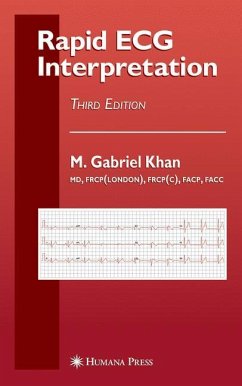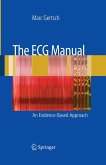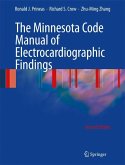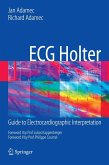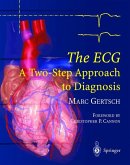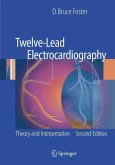The electrocardiogram (ECG) is the ? rst test performed on most cardiac patients-one that helps make the ? rst part of the diagnosis and one that can frequently direct treatment decisions. Thus, for any phy- cian, a solid understanding of the ECG is critical. Learning the basics and subtleties of the ECG is a right of passage for all physicians and healthcare providers during their training. So, what would we want from a book on ECGs? Ideally, such a book would be comprehensive, yet concise, practically oriented, and explain pathophysiology and its application to practice. Dr. Khan has written such a book. Rapid ECG Interpretation is comprehensive, yet concise, and very practically oriented. More imp- tant, it takes a step-by-step approach, walking the reader through a thorough evaluation of the ECG. This, as many of us have been taught, is the "right" way to look at an ECG. This edition includes a new opening chapter that covers basic concepts. This quickly orients the reader tothe physiology, anatomy, and geometry of the electrical system of the heart. After reviewing each component of the ECG, the next section describes the unique ECG patterns of speci? c cardiac conditions, including pulmonary embolism and long QT syndrome. This is f- lowed by a chapter with each of the arrhythmias. Finally, Dr. Khan includes an invaluable section-an ECG Board Review and Self- Assessment Quiz. With this, the reader can really see if the basic c- cepts and ECG fundamentals have been learned.
From the reviews of the third edition:
"As the title indicates, the book describes a method of ECG interpretation meant to increase the reader's accuracy and speed when reviewing ECGs. ... It is aimed at anyone wanting to improve proficiency in ECG interpretation. It starts at a very basic level but provides information that would be useful to trainees in medicine and cardiology seeking to hone their skills. ... This book provides a method for systematic interpretation of ECG suitable for beginning ECG readers." (James Schipper, Doody's Review Service, January, 2008)
"As the title indicates, the book describes a method of ECG interpretation meant to increase the reader's accuracy and speed when reviewing ECGs. ... It is aimed at anyone wanting to improve proficiency in ECG interpretation. It starts at a very basic level but provides information that would be useful to trainees in medicine and cardiology seeking to hone their skills. ... This book provides a method for systematic interpretation of ECG suitable for beginning ECG readers." (James Schipper, Doody's Review Service, January, 2008)

